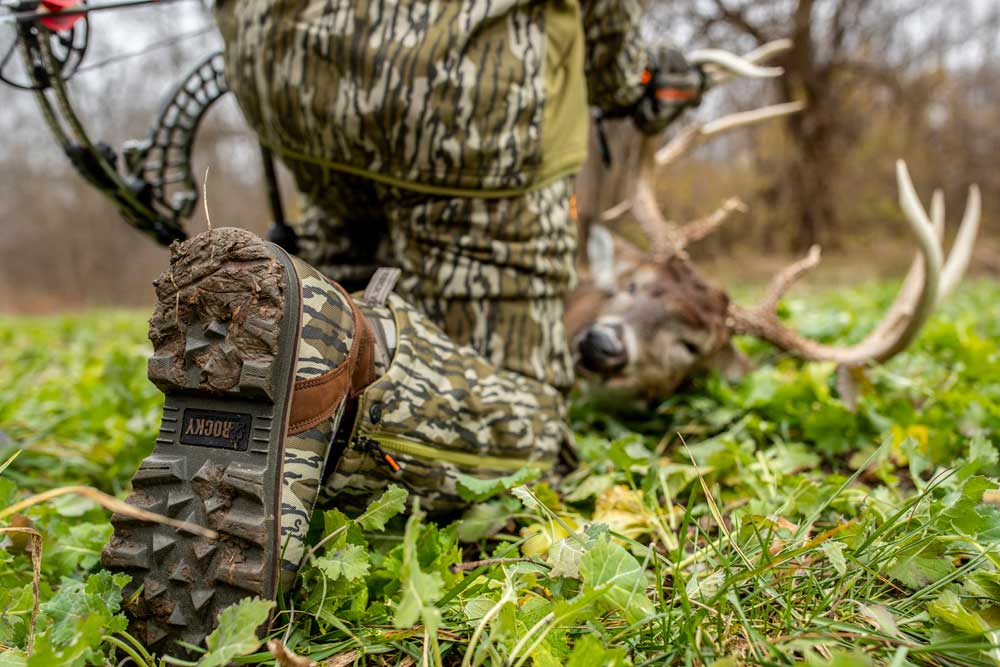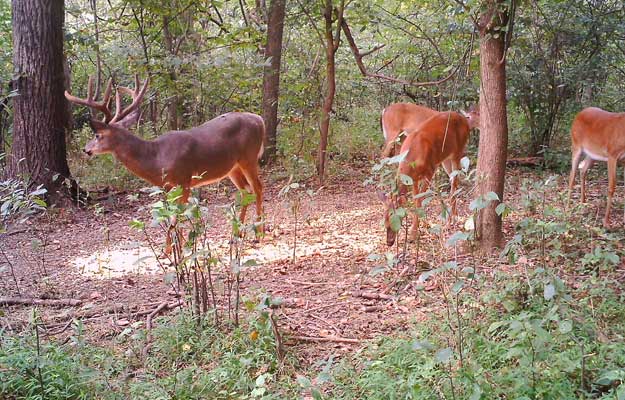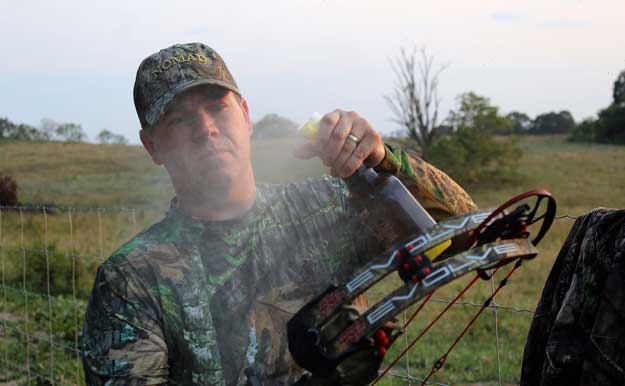Heath Wood | Mossy Oak ProStaff

For years bowhunters have debated about bowhunting deer during the early season. When is the best time of day to hunt? Should I only hunt evenings? Does calling deer during early season work? Can you harvest a mature buck early season? Those are just a few of the many questions hunters ask before getting in the stand for the first time of the year.
Here are 5 early season deer hunting tips that shouldn't be overlooked when trying to harvest a mature buck in early fall.
Have an Escape Route
One of the biggest arguments with early season bowhunting is what time of day to hunt. Some of the most successful hunters say to only hunt the evenings. Others say the exact opposite arguing that early mornings are the only way to go. The one thing we can all agree on is the importance of trying to keep deer from getting spooked when entering or leaving the treestand. This is the main reason it is so important to have an escape route to and from your treestand.
Hunters that don't hunt mornings say it's because they don't want to spook deer that are feeding in crop fields or traveling back to bedding areas after feeding all night. However, the same can be said for hunting evenings, because it is nearly impossible to leave a treestand after dark without spooking a field full of deer. There is truly no magic rule for when to hunt early season deer. Morning or afternoon, have an escape route to and from the stand to keep from spooking deer, and keep them coming back.
Use Game Cameras

One of the most important tools when scouting before deer season is a game camera. Using game cameras throughout the summer in multiple locations helps hunters to keep an inventory of which bucks made it through the winter, how much bigger bucks are from the previous year, and of course, how many total bucks are on the property.
As bow season begins, pay close attention to the date and time of target deer pictures. Seek to understand what has that particular deer in that spot at that time. Keeping game cameras going throughout the early part of season will help you learn when deer are going to and leaving food sources and if bucks are still in bachelor groups. Use your cameras to hone in on where specific deer are entering fields. This will help to learn where they are most likely bedding, which in the early part of season, usually isn’t far from their primary food source. All of these findings can be big factors in where to position your ambush point and how to strategically access and exit that spot to minimize hunting pressure.
Cut Shooting Lanes
When hunting in a treestand, it can often be the small and forgotten things that make or break a hunt. Pre-season preparation is a good time to make sure that the small things aren't going to be a factor when an opportunity to shoot happens. Preparing the treestand area by cutting shooting lanes before a hunt is a good place to start. During the early part of the season, foliage on trees can be a huge factor in being able harvest a mature buck. Making sure that all shooting lanes are clear is a must, not only in being able to see a buck coming but also in making a successful shot.
It's easy to forget about shooting lanes, especially when stands have been up a few months prior to hunting. Make sure to clear out all possible shot opportunities with a good pruning saw a couple weeks before hunting. However, be aware that clearing lanes too early can give chance of regrowth resulting in a blocked shooting lane as well.
Preventing Human Odor

When hunting early season, temperatures are still fairly warm. Sweating causes human odor, which is why staying scent-free during early season can be a difficult task unless you follow a few tips along the way.
- Dress Light - Wear moisture-wicking fabrics early season. This type of fabric dries quickly and helps keep the hunter cool and dry throughout the hunt.
- Wait to Dress - Wait to put on items such as a light jacket, gloves and head net until settled into the stand. Walking to the stand is when the body warms up the fastest, so don't rush the process by having too many accessories on until ready to hunt.
- Shower with Odor Killing Soaps - Taking a shower with odor eliminating soaps and shampoos is a step you do not want to leave out during the early season. Most of these soaps are designed to eliminate odor and more importantly, fight odor from coming back. This will help to keep scent-free longer throughout the hunt.
- Spray Everything - Using scent eliminating sprays is an obvious tactic during early season bowhunting. However, just spraying clothes will not cut it. Spray everything that will be exposed to the outdoors such as binoculars, rangefinders, grunt calls, release, etc. Also, do not forget high perspiration areas such as the inside of a hat where sweat is gathered, as well as the insides of boots.
- Spray Often - Spray down with your favorite scent eliminating spray multiple times throughout the hunt. This keeps any human odor from developing while the body is exposed to warmer temperatures.
- Scent Transfer – Don’t forget about smells you leave behind. Be sure to spray down after the hunt. Leaving scent behind is one way to clue deer in to your whereabouts.
Don't Be Afraid to Use a Grunt Call
A grunt call is primarily used as a call to lure in a buck during the rut. However, early season can be a great time to use this call as well. The difference between calling to deer early season compared to calling to rutting bucks in mid-November is the intensity of calling. Deer use multiple vocalizations all year. Early season is when does and fawns communicate with soft grunts, bleats, and bawls. Yet using a grunt call on a buck can work too as long as you stay soft and subtle. If a mature buck is feeding on the other side of a crop field, blowing a couple of soft grunts can ramp up his curiosity as to what competition he may have in the area. As the buck’s curiosity builds, this could bring him into bow range to make the shot.
The key to early season deer calling is not to overdo it. Use calls sparingly and at a lesser volume than as used during the rut. Again, use a grunt call to build up curiosity, making a buck come to the soft sound. When doing this, remember not to call when a buck is looking at you or if he is already coming your way. In doing this, it allows the buck the chance to spot your location. Only call when the attention is drifting away such as when feeding or checking out other deer.
Putting these five tactics to use could be the advantage one needs to harvest that early season mature buck. In keeping with these recommendations, a successful early season bowhunt should be on the horizon as well as putting you a step ahead for the rest of the fall season.






























